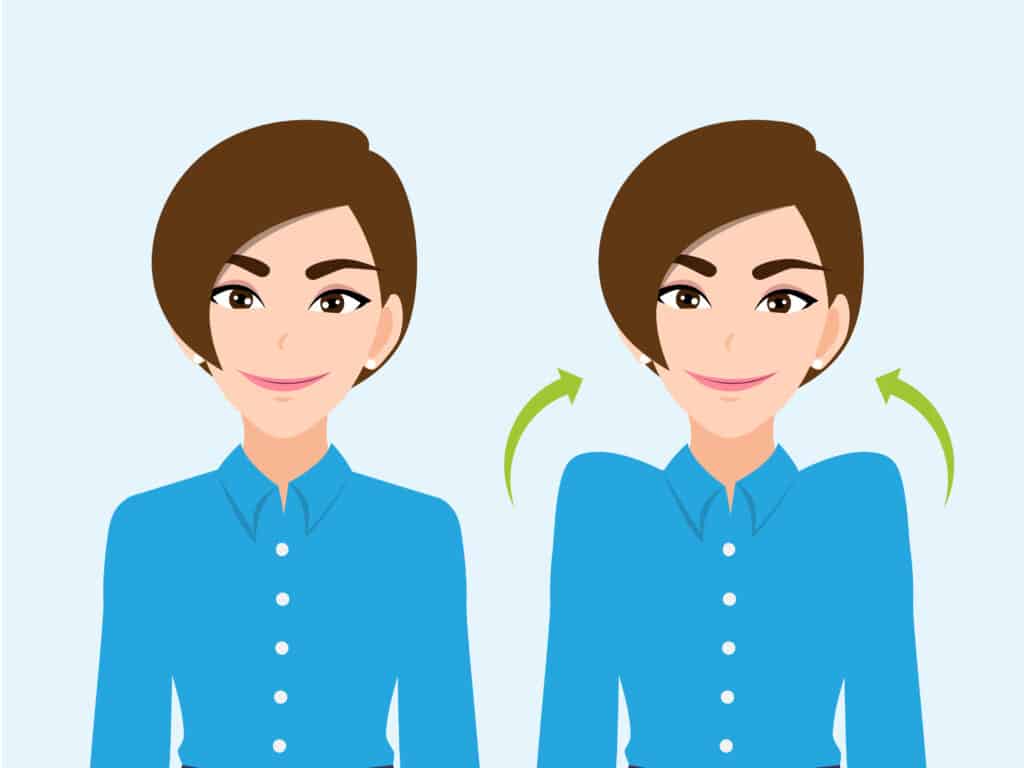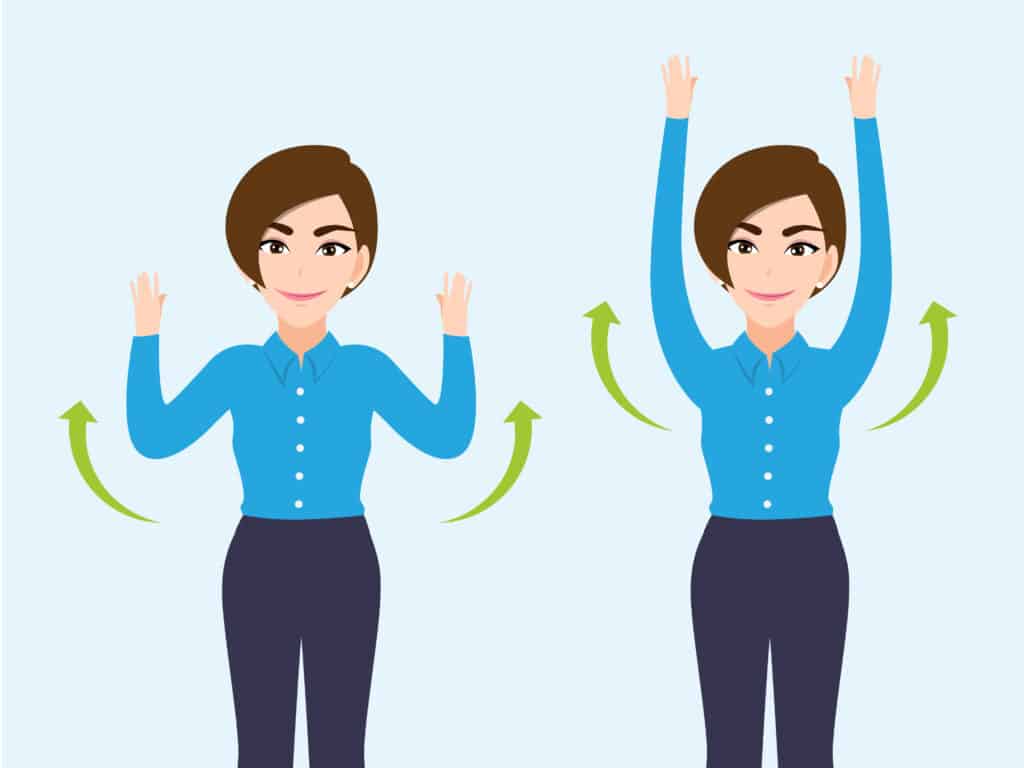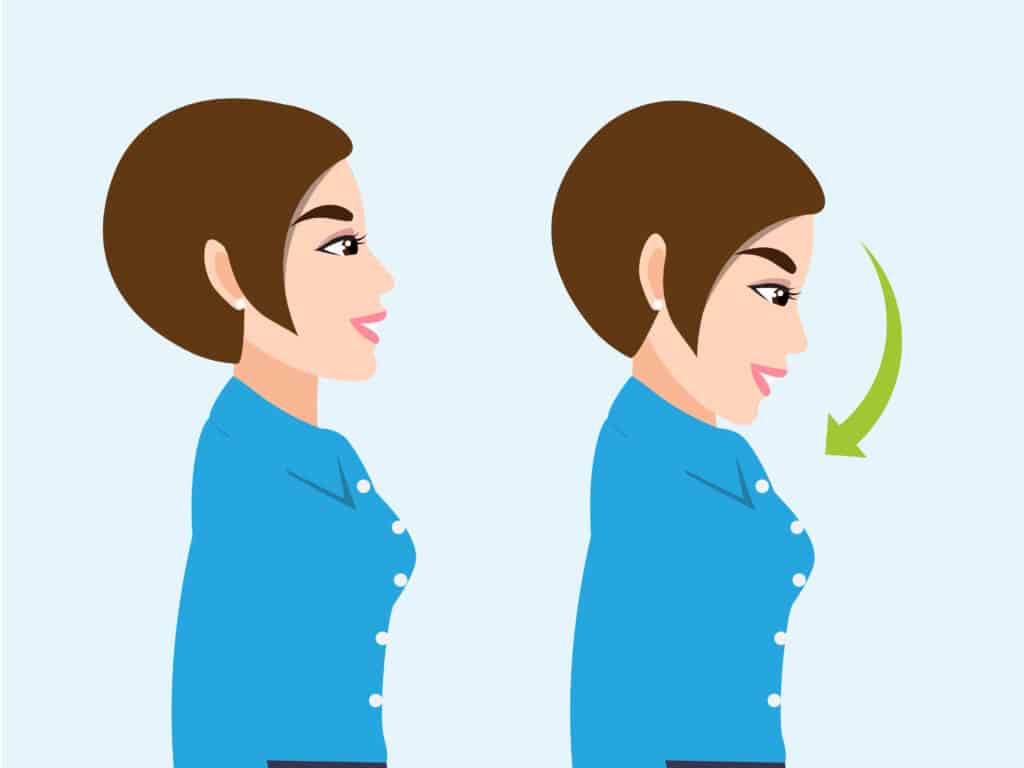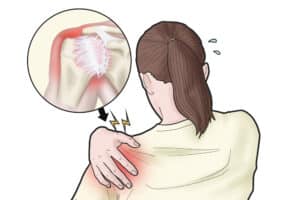In today’s digital age, our reliance on smartphones, tablets, and computers has given rise to a new health concern known as “tech neck.” This term refers to the strain on the neck and shoulder muscles caused by the prolonged use of these devices. Fortunately, with the right physiotherapy exercises and stretches, you can counteract the effects of tech neck. Read on to learn how.
What is Tech Neck?
Tech neck, also known as text neck or computer neck syndrome, is a modern-day health concern resulting from the overuse of smartphones, tablets, and other handheld devices. It’s a form of repetitive strain injury that affects the neck, shoulders, and sometimes even the upper back.
How Does Tech Neck Occur?
Tech neck occurs primarily due to poor posture and prolonged usage of handheld devices like smartphones and tablets. When looking down at these devices, the head tilts forward, putting extra strain on the neck, and the shoulders may hunch, causing imbalance. Spending extended periods without proper breaks or movement leads to continuous strain, reduced blood flow, stiffness, and discomfort in the neck and shoulder muscles. These factors combined contribute to the development of tech neck.
1. Poor Posture
Head Position: When looking down at a device, the head is often tilted forward. Since the head weighs around 10–12 pounds, this forward tilt can put a strain of 30–60 pounds on the neck.
Shoulder Position: The shoulders may also hunch forward, contributing to strain and imbalance in the muscles.
2. Prolonged Usage
Extended Periods: Spending hours on end without proper breaks leads to continuous strain on the neck and shoulder muscles.
Lack of Movement: Staying in one position for too long reduces blood flow to the muscles, leading to stiffness and discomfort.
Symptoms of Tech Neck
The symptoms of tech neck are more than just an inconvenience; they’re a sign of our times. Pain and stiffness in the neck, shoulders, and upper back become unwelcome companions, along with reduced mobility that can make simple movements feel like a chore. Add in tension headaches, and in more severe cases an unsettling numbness or tingling in the arms or fingers, and you have a condition that demands attention.
- Pain and Stiffness: This can occur in the neck, shoulders, and upper back.
- Reduced Mobility: Limited range of motion in the neck and shoulders.
- Headaches: Tension in the neck can lead to tension headaches.
- Numbness or Tingling: In severe cases, there may be numbness or tingling in the arms or fingers.
Long-term Consequences of Tech Neck
The long-term consequences of tech neck include chronic pain in the neck and shoulders, permanent damage to muscles and nerves, and changes in posture like a hunched back or forward head position, which can have broader health implications.
Who Does Tech Neck Affect?
Tech neck can affect a wide range of individuals, particularly those who engage in prolonged use of handheld devices such as smartphones, tablets, and laptops. Here’s a breakdown of who might be most susceptible:
Office Workers: Those who spend long hours working on computers, often with improper ergonomics, are at risk.
Students: With the increasing use of digital devices for studying and leisure, students of all ages can be affected.
Young Adults and Teenagers: This group often spends significant time on smartphones and other handheld devices for social media, gaming, and entertainment, making them susceptible.
Remote Workers: The rise in remote work has led to increased screen time, often without proper ergonomic setups at home.
Gamers: People who engage in prolonged gaming sessions without taking breaks or maintaining proper posture can develop tech neck.
Frequent Travelers: Business travelers or others who rely heavily on mobile devices while on the go might experience symptoms.
Children: With the growing exposure to tablets and smartphones at a young age, even children can be affected, especially if they use devices without guidance on proper posture.
Elderly Individuals: Though less common, older adults who use digital devices without awareness of proper posture can also experience tech neck.
In essence, tech neck can affect almost anyone who uses digital devices extensively without proper posture, ergonomics, or breaks. It transcends age, profession, and lifestyle, reflecting a broader societal trend towards increased screen time. Awareness and proactive measures are key to prevention across all these groups.
Tech Neck Prevention and Treatment
Understanding tech neck is the first step towards prevention and treatment. It is a manifestation of our digital age, reflecting how our lifestyles and habits have evolved. While it’s a common issue, awareness, understanding, and proactive measures can prevent or alleviate its symptoms. By recognizing the signs and making simple adjustments to our daily routines, we can protect our neck and shoulders from unnecessary strain and enjoy our devices without compromising our health.
Some strategies include:
Ergonomic Setup: Using devices at eye level and maintaining a neutral spine position.
Regular Breaks: Taking breaks to stretch and move around.
Physiotherapy: Engaging in exercises and stretches specifically designed to counteract the effects of tech neck.
Professional Help: If symptoms persist, seeking professional medical advice is essential.
Tips for Preventing Tech Neck
- Maintain Proper Posture: Keep your devices at eye level to avoid looking down.
- Take Regular Breaks: Step away from your devices every 30 minutes to give your neck and shoulders a rest.
- Stay Active: Regular exercise can help keep your muscles strong and flexible.
Physiotherapy and Tech Neck
Physiotherapy for tech neck offers a multifaceted approach that includes pain relief, mobility improvement, muscle strengthening, posture correction, personalized treatment, education, and a holistic view of the patient’s health. It’s a comprehensive way to treat the condition and prevent future occurrences.
Physiotherapy can play a vital role in treating and preventing tech neck by focusing on the following aspects:
Pain Relief: Physiotherapists can use techniques like massage, heat therapy, or ultrasound to reduce pain and inflammation in the affected areas.
Improving Mobility: Through targeted exercises and stretches, physiotherapy helps restore the range of motion in the neck and shoulders, reducing stiffness and enhancing flexibility.
Strengthening Muscles: Physiotherapy includes exercises that strengthen the muscles supporting the neck and shoulders, helping to maintain proper alignment and posture.
Correcting Posture: Physiotherapists can assess and correct postural imbalances, teaching patients how to maintain proper posture while using devices.
Personalized Treatment Plans: A physiotherapist can design a tailored treatment plan based on individual symptoms, lifestyle, and needs, ensuring a more effective approach to healing and prevention.Education and Prevention: Physiotherapy also involves educating patients about the risks of tech neck and providing strategies to prevent recurrence, such as proper device usage, taking regular breaks, and incorporating daily stretches.
Recovery Time for Tech Neck
The time required to treat tech neck can vary widely depending on several factors, including the severity of the condition, the individual’s response to treatment, the methods used, and adherence to the prescribed therapy and exercises.
It’s essential to note that tech neck is often a cumulative condition, and patience with the healing process is vital. Regular assessment and guidance from a physiotherapist can provide a more accurate timeline for individual cases. The key to successful treatment often lies in a combination of professional care, self-management, and lifestyle changes.
Exercises and Stretches to Help Prevent Tech Neck
The good news is tech neck is preventable and often reversible.
Whether you’re an office worker glued to your computer, or a teenager engrossed in social media on your phone, incorporating simple exercises and stretches into your daily routine can make a world of difference. These targeted movements are designed to strengthen the muscles that support your neck, improve flexibility, correct posture, and alleviate the strain that leads to tech neck.
Below, we’ll explore some exercises and stretches that are easy to perform, whether you’re at home, in the office, or on the go. From gentle neck tilts to invigorating shoulder rolls, these techniques are your first line of defense against the discomfort and potential long-term damage caused by tech neck.

1. Neck Tilts and Turns
How to do it:
- Sit or stand up straight.
- Slowly tilt your head to one side, bringing your ear towards your shoulder.
- Hold for 15–20 seconds, then return to the center.
- Turn your head slowly to the other side, holding for 15–20 seconds.
- Repeat.
Benefits: This exercise helps in stretching and strengthening the neck muscles.

2. Shoulder Rolls
How to do it:
- Sit or stand up straight.
- Roll your shoulders backward in a circular motion.
- Repeat 10 times, then switch directions.
Benefits: Shoulder rolls are excellent for relieving tension and improving flexibility in the shoulder area.

3. Wall Angels
How to do it:
- Stand with your back against a wall.
- Raise your arms to the sides, forming a “W” shape.
- Slide your arms up the wall, forming an “I” shape.
- Repeat 10 times.
Benefits: Wall angels are great for strengthening the upper back and shoulder muscles, promoting proper posture.

4. Chin Tucks
How to do it:
- Sit or stand up straight.
- Gently tuck your chin to your chest.
- Hold for 5 seconds, then return to the starting position.
- Repeat 10 times.
Benefits: Chin tucks help in strengthening the neck muscles and promoting a neutral spine position.
Get started today!
Seeing a professional physiotherapy provider like Nova Physiotherapy for tech neck can offer expert care, personalized treatment, pain management, education, and a holistic approach to healing. If you’re considering physiotherapy, contact the friendly and experienced team at Nova Physiotherapy. We’re ready to help you on the road to better health.








